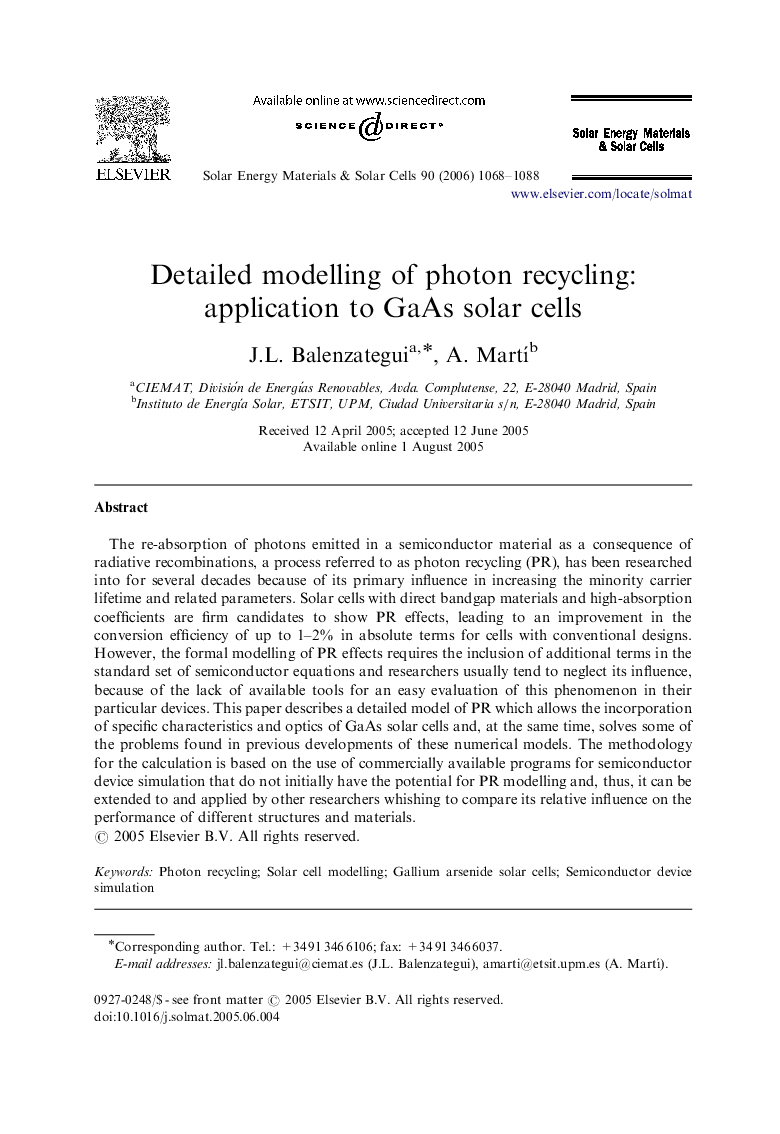| Article ID | Journal | Published Year | Pages | File Type |
|---|---|---|---|---|
| 81303 | Solar Energy Materials and Solar Cells | 2006 | 21 Pages |
The re-absorption of photons emitted in a semiconductor material as a consequence of radiative recombinations, a process referred to as photon recycling (PR), has been researched into for several decades because of its primary influence in increasing the minority carrier lifetime and related parameters. Solar cells with direct bandgap materials and high-absorption coefficients are firm candidates to show PR effects, leading to an improvement in the conversion efficiency of up to 1–2% in absolute terms for cells with conventional designs. However, the formal modelling of PR effects requires the inclusion of additional terms in the standard set of semiconductor equations and researchers usually tend to neglect its influence, because of the lack of available tools for an easy evaluation of this phenomenon in their particular devices. This paper describes a detailed model of PR which allows the incorporation of specific characteristics and optics of GaAs solar cells and, at the same time, solves some of the problems found in previous developments of these numerical models. The methodology for the calculation is based on the use of commercially available programs for semiconductor device simulation that do not initially have the potential for PR modelling and, thus, it can be extended to and applied by other researchers whishing to compare its relative influence on the performance of different structures and materials.
